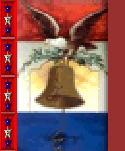 |
||||
 |
||||
| |||||||||||||
|
Henrik Ibsen’s “The Master Builder” By
using Aristotle’s definition we can see that Ibsen’s The Master Builder
falls in the category of a tragedy. “Aristotle
tells us that a tragedy, by its nature, must tell of a downfall, and that the
hero must be a virtuous man of some eminence, brought down by ‘some error or
frailty.’” (Hall, 752) Halvard
Solness is the hero, or protagonist, in this play.
Almost as soon as he enters the play Ibsen causes the audience to see him
as a probable philanderer. As the
play progresses, we of the audience begin to see that it is this characteristic,
this “moral Achilles’ heel,” that is his “fatal flaw.”
(Hall, 752) “The
tragic hero is typically on top of the wheel of fortune,” (Frye, 651) and this
is where, in the first minutes of the play, Ibsen was careful to let the
audience see Halvard Solness. Solness is portrayed as an eminent architect of
his community, and much of the surrounding area.
We know this because he has traveled to other towns to design and build,
as told by Hilde Wangel when she appears in the play.
We have, then, Aristotle’s first requirements of a tragedy; a
protagonist who is well known and respected, but who has an error or frailty. Ibsen,
in the first few minutes of the play, is also careful to let the audience know
that Solness used others to get to his eminent position.
In his conversation with Knut Brovik, about Brovik’s son Ragnar’s
ability as an up-and-coming architect, Solness complains that Ragnar “hasn’t
learnt anything – not thoroughly.” And
Knut Brovik reply’s, “You hadn’t learnt much about the business
either, when you were in my office.” Ibsen’s
comment on how Brovik says this line, “looking at him with secret hatred and
speaking huskily,” tells the audience much about Solness.
He evidently worked for Brovik when he first started, and somehow made
his way to the top by, in the words of Brovik, taking “...the wind out of my
sails and – and a good many other people’s.”
The audience is left with the clear impression that Solness walked all
over Brovik and others to make it to the position of master builder. This
is important information to have in order to enable the reader or audience to
understand why Solness is so fearful that the younger generation will take over
his position if he is not careful to prevent such a happening.
After all, this is what he did to get where he is now.
To his way of thinking, therefore, the only way the younger generation is
going to make it to the top is by walking all over him. In
the first few minutes of the play Ibsen is able to set up another characteristic
of the tragedy; reversal of intention. As
the play unfolds the audience is able to watch Solness take actions which he
feels will protect him from what he perceives to be the younger generation’s
need to get to the top of their particular vocation.
The audience, however, can see the inevitability of these actions. They can see that, contrary to what Solness intends,
everything he does will eventually give those of the younger generation the
foothold they need to get the recognition they seek. This
reversal of intention takes a major turn upon the entrance of Hilde into the
play. It is important that the
audience believes that she can so quickly gain a mental and emotional hold on
Solness. To this end Ibsen has
Hilde enter right after Solness has a conversation with Dr. Herdel.
This conversation preceding her appearance sets the plausibility for the
control she is so quickly able to exert over Solness. In
this conversation the audience sees that Dr. Herdel suspects that Solness has
more than just a working relationship with his bookkeeper, Kaja Fosli.
Solness’ reply seems feeble. The
audience is more apt to believe, because of his earlier actions and words with
Kaja, that he is indeed having some sort of affair with her.
Solness attempts to explain away his actions, yet all his words seem to
fall short of justifying those actions. The
audience does not quite believe he is totally innocent in this, and possibly
other, relationships. His
conversation with Dr. Herdel comes across as nothing more that a thinly veiled
attempt to conceal such an affair. This
conversation, and Solness’ flirtation with Kaja earlier in the play, gives the
audience ample justification to believe he could very well have had a dalliance
with Hilde ten years prior to her appearance today.
Again Ibsen seems to be emphasizing the moral flaw in his hero’s
character. And it is because of this obvious moral flaw that we in the audience
do not believe Solness when he says he does not remember anything about the
first time he and Hilde first met. The
only way we would believe he forgot is if there had been so many flirtations
over the years that one would not have much of a chance of standing out as
memorable. So
when Hilde tries to jog Solness’ memory about their encounter ten years
earlier the audience does not really believe him when he tries to dismiss Hilde
by pretending to agree with everything she says.
We somehow believe that he suddenly does remember her, but does not want
her to know he does. His ruse is to tell her that he will go ahead and agree with
her that they had a flirtatious encounter; all the while being sure to let her
know that he really does not remember. The
audience believes he does remember; or, if not, we are led to believe he had so
many that it really did not matter to him whether or not he remembered this
particular one. If the opening
scenes were any indication, Solness made a habit of flirting with the younger
girls. It therefore becomes
believable to the audience that Hilde was one of those flirtations. This
is all supported by Aline’s reactions each time she sees Solness alone with
either Kaja or Hilde. It is as though she’s seen it all before.
She knows the looks he gives the girls.
She knows all his rationalizations.
She knows his character and this moral flaw.
Ibsen has done an excellent job of letting the audience know that the
protagonist is both eminent and open to disaster. It
may have been Solness’ intention to prevent the younger generation from taking
over by controlling them through these young women.
He admits that he keeps Kaja around so that he can keep Ragnar under his
control. Yet, it is these infatuations that eventually bring him to
his death. The fact that the
flirtation with Hilde began ten years ago seems to testify to the inevitability
of his downfall. If she had not
come to claim the promises he made to her, one of the other girls he flirted
with, or even had affairs with over the years, would have eventually come to
make her claim. In
the meantime all these actions point to the fact that Solness is aware that he
is older, and therefore prone to lose his grip on this control.
His attempt to please Hilde by climbing the tower to his new house is
also an attempt to prove that he is still capable of doing what he did ten years
ago. By doing so he felt he would
be making a statement to everyone that he is not yet ready to give up his
position as master builder to the younger generation. Pride,
played out in his affairs and flirtations, is seen as the real fatal flaw; the
flaw that eventually leads to his death. In
Solness’ attempt to prove himself, Ibsen is able to bring the reversal of
intention to its ultimate climax. By
climbing the tower to prove that he will not let the younger generation take
over he accidently falls to his death. The
audience knew this was going to be the outcome from the moment Hilde found out
there was a tower on the new house. But
even if he had not killed himself, the audience is led to believe that Solness
would have lost all he had anyway. If
not to Hilde, at least to the younger generation exemplified by her, Kaja and
Ragnar. This is the tragic irony,
also found in tragedies. Solness
worried he would lose all he had to these young people.
So much so that he denied Ragnar the seemingly small act of showing his
father, before he died, some plans he designed, which were approved by Solness.
Yet it was a young person who talked Solness into approving the plans.
It was his flaw, his pride, and his need to be seen as attractive and
prominent by these young people that brought him down. We
are led to believe that Ragnar’s drawings were very good.
This makes it reasonable for the audience to assume that, in the natural
course of events, had Solness lived, he would have eventually lost his position
to Ragnar anyway. It is in this
sense that the conclusion is inevitable. Solness
was going to die; either by suffering physical death, as he did, or a kind of
spiritual death by losing all that kept him going in a household otherwise
filled with grief and loss. Works Cited Frye, Northrop.
“Tragedy, Comedy, and Irony From the Anatomy of Criticism.”
Drama and Discussion. 2nd ed.
Ed. Stanley A. Clayes. Englewood Cliffs: Prentice-Hall, 1978. 651-656. Hall, Donald. To Read
Literature: Fiction, Poetry, Drama. Fort
Worth: Harcourt Brace College Publishers, 1992. |

|